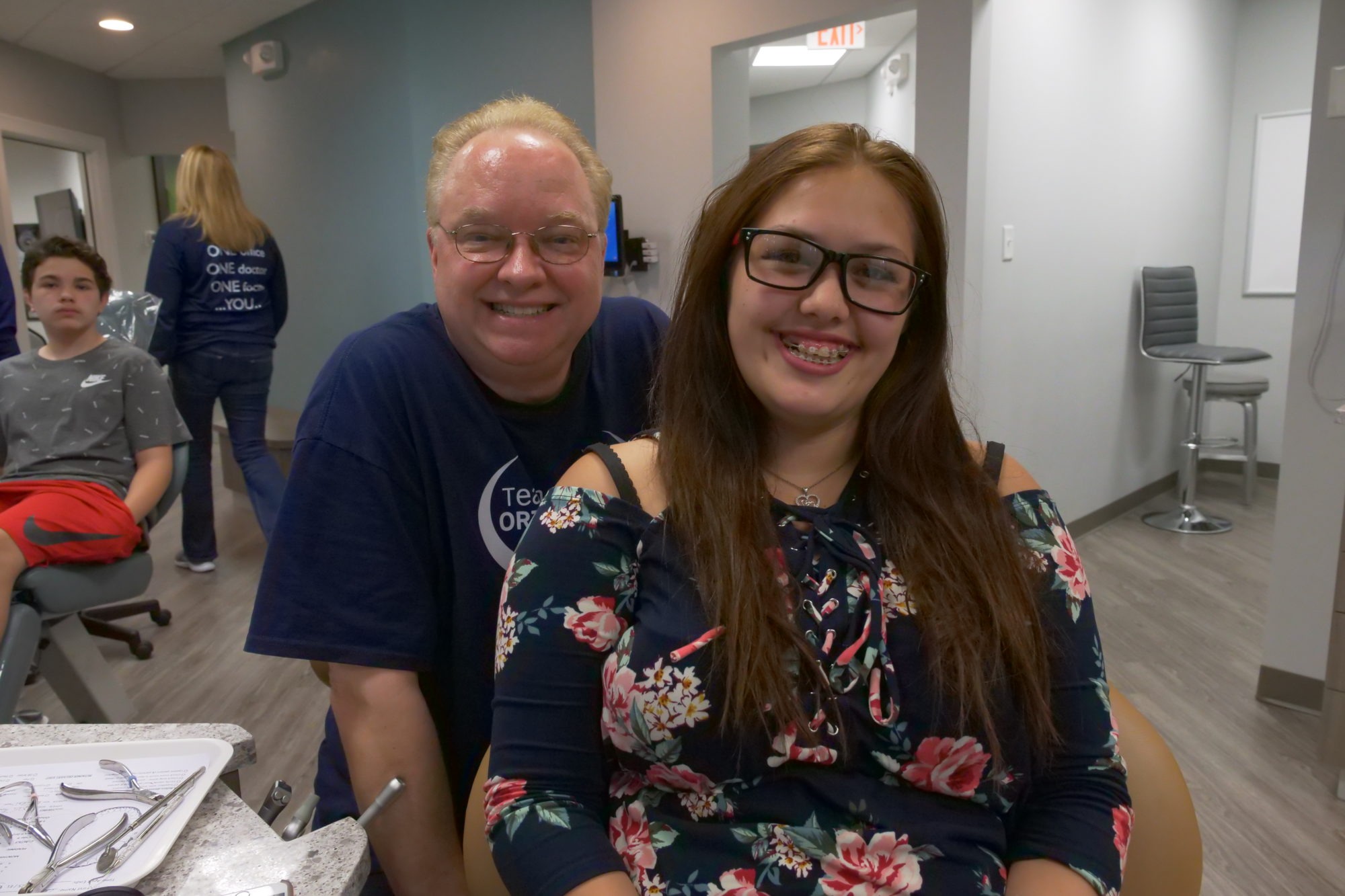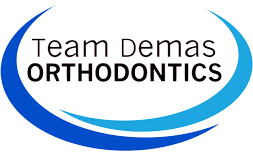
Two-Phase Treatment Process

The phrase “timing is everything” is popular for a reason! It’s applicable in many situations, particularly when it comes to parenting, and that includes planning orthodontic treatment for your child. Trying to determine if, when, and what kind of help your child may need with their smile can be a little overwhelming. There’s so much information available that it’s easy to get confused by differing opinions from various sources, but Team Demas Orthodontics is here to help! Exploring the ins and outs of orthodontics doesn’t have to be a stressful experience. Our team is committed to providing clear, concise information you can understand about what a long-term plan for your child’s orthodontic care might look like.
The first step towards a straighter, healthier smile should always be an initial orthodontic evaluation. The American Association of Orthodontists recommends that all children have their first orthodontic consultation by around the age of seven, and we agree. This gives an experienced orthodontist like Dr. Demas the chance to look for and diagnose many common dental issues before they become more problematic. This kind of early intervention can often reduce the need for more intensive orthodontic treatment at a later age.
The idea of being proactive with your child’s oral health instead of reactive can be summed up by the process of two-phase treatment. This is a specialized service we offer for younger patients we anticipate needing orthodontics as they grow. Let’s take a closer look at what this treatment entails, and how it can be of benefit to your child’s smile and overall oral health!
What is two-phase orthodontic treatment?
Two-phase treatment is a process whereby a child will receive orthodontic treatment at two separate times, with a break in between. Generally, we will initiate the first phase of treatment when the child has a mix of primary and permanent teeth. This will be followed by a period of rest before the second phase begins, usually once the child has most or all of their adult teeth. Although braces or other orthodontic appliances are sometimes used during the first phase, they are much more common in the second phase of treatment. This will depend on the specifics of each individual case.
Two-phase orthodontic treatment is often recommended when we want to:
- create an optimal relationship between the teeth and jaws
- align the teeth, resulting in a straighter smile
- position the teeth and jaws for more pleasing facial symmetry
- create a better environment for the permanent teeth to grow in
Once Dr. Demas has completed a thorough examination of your child’s mouth, the first phase of treatment may be suggested if it appears that:
- he or she will be prone to a particular problem that we want to keep from developing (preventive treatment)
- he or she already has a developing problem that we want to intercept (interceptive treatment)
- your child’s jaw bones will need a little guidance as they grow (growth modification)

For the most successful results, we will time the first phase of orthodontic treatment to take advantage of the predictable stages in dental development. When we follow the patterns of normal childhood growth and development, we have the best chance of improving and correcting orthodontic issues early on. This is important, because many common dental problems can be treated relatively easily in a growing child, but as they get older and the jaw bones stop growing, these same issues may require more invasive treatment to correct.
While early treatment can achieve lasting results for many of these issues and lessen the impact of others, most patients will still require a second phase of treatment to complete the alignment process the first phase has begun.
How does two-phase treatment work?
In order to understand how two-phase treatment can benefit your child, it’s important to know how each phase works, as well as what happens during the resting period in between them.
Phase One
Phase one treatment helps develop a child’s jaw to better accommodate all the permanent teeth, as well as improve the way the upper and lower jaws fit together. This method of treatment has a number of benefits. It not only improves the ability to bite, chew, or even digest food more effectively, but may also reduce the risk of damaged teeth due to crowding, misalignment, or malformed jaws.
Phase one treatment helps to contribute to longer-term stability, which simply means that the teeth will stay in whatever position Dr. Demas guides them to. The second phase of treatment continues this stabilization by moving the teeth into their final desired positions. However, we generally hit the pause button on treatment in between the first and second phases. This is a period of time when the permanent teeth are emerging, and we like to give the teeth, jaws, and mouth a temporary break as they grow.
Resting Period
Once we successfully complete first phase treatment, there should be enough room to give the remaining permanent teeth a clear path to eruption. Teeth that have already been moved will be stabilized with either a space maintainer or fixed retainer.
Phase Two
This is where it all comes together! This phase will usually begin once all of your child’s permanent teeth have erupted. Braces or clear aligners will almost always need to be used for a time. Once that part of treatment is complete, fixed bonded retainers will be necessary to ensure their smile stays in place!

Two-phase treatment with Team Demas Orthodontics
Here at Team Demas Orthodontics, we believe treatment should never take a “one size fits all” approach! Smiles are not created equally, and what works for one child may not work for another. That’s why Dr. Demas is dedicated to designing a unique treatment plan for every patient we see. If you’re in Southington or the surrounding communities, and want to learn more about how two-phase orthodontic treatment could improve your child’s oral health, get in touch with us to schedule a free consultation. This is the perfect time to take the first steps towards a bright, beautiful, and healthy smile for your child!
